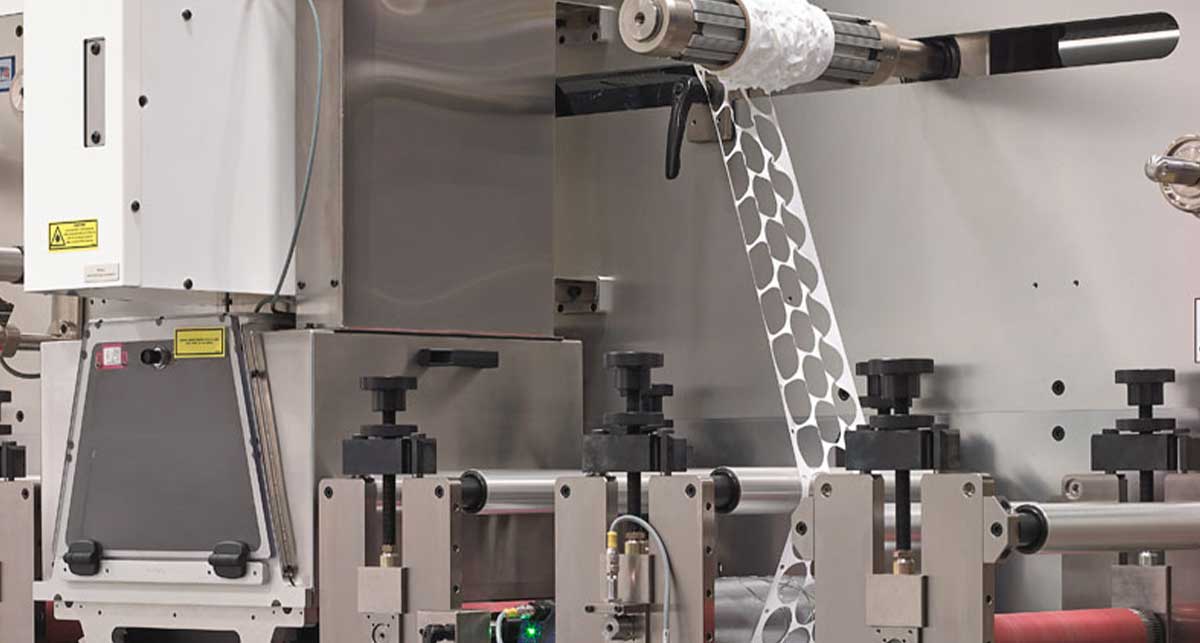From our 30+ years of experience, we’ve come across a number of materials that behave abnormally after they’ve been cut. If you don’t know what you’re looking for, they could ruin the experience of opening up your box of freshly cut parts.
The abnormal behavior of certain materials can impact the dimensions, tolerances, and overall part quality. At Strouse, we’ve spent over three decades working with many flexible materials that require special considerations. We know how to account for the abnormal behavior to create a predictable solution.
If you’ve experienced material-cutting issues, don’t worry—today, we’ll explore the factors that affect post-cut performance and how experienced converters ensure products arrive with precision.
How Do Flexible Materials Change When You Cut Them?
Every material behaves differently due to its unique properties, and this can extend to after they’re cut. Certain materials remain entirely consistent in their behavior and appearance after they’ve been cut, while others risk losing their shape entirely or gradually devolving into parts that no longer fit the right specifications. This can be due to the environment they’re subjected to, as heat and humidity strongly affect some materials.
If you want to learn more about die cutting and product manufacturing to improve your manufacturing process, the guide above will help you better understand how it works. Now, let’s explore the factors that lead to additional cutting considerations.
1. MATERIAL SHRINKAGE & GROWTH
One of the most challenging factors when running rolls of material through a machine is maintaining the press tension. While the material must be pulled tight enough to avoid slack, pulling it too tight could result in shrinkage after the cut when it returns to its original resting state.
Viscoelastic materials, like VHB tape, are more prone to stretching, so operators need to account for this during the converting process to meet the specified tolerances. As we’ll cover in the next section, VHB tape’s unique composition may also cause it to “grow back” into place once it’s been cut.
Beyond tension control, environmental factors like humidity and temperature of the environment may affect tolerances. Heat-sealing processes can help preserve products during transportation, but you’ll still want to plan for the parts to remain functional when transitioning from one environment to another.
2. ADHESIVE OOZING
Low-viscosity adhesives easily flow into the nooks and crannies of a surface to create a stronger bond. These materials are often used to create airtight seals. Unfortunately, low-viscosity adhesive tends to ooze out the sides of material when cut, which could cause a part component to be out of specification.
a. UNSUPPORTED MATERIALS
“Unsupported” materials don’t have carriers to stabilize them when cut or formatted onto a roll. For reference, thin transfer tape is essentially glue on a paper liner, and without a liner, it would simply fall off the edge of the press into a pile of goo. Certain, softer materials may also have deformed edges when you cut them, which can lead to out-of-tolerance parts.
Transfer tape is not a flexible material that holds its shape like a PET carrier, which can lead to excess oozing. Oozing is common when you rewind a roll of transfer tape, causing the adhesive to stick to liners and ‘grab’ things around it.
b. VHB TAPE
VHB tape oozes back into place after it’s been cut, necessitating the removal of the extra material. Cutting VHB but leaving the edges in place will result in them growing back and ruining the intended function of the cut part.
At Strouse, we build in processes to mine out the excess material immediately after the VHB products are die cut so their functionality isn’t ruined by oozing. Our single-pass die cutting process creates a quick and seamless production process to create accurate and efficient parts.
Preparing for a Smooth Production: Key Steps and Expectations
So far, we’ve covered issues you may encounter when cutting certain flexible materials, but what can you do to prepare yourself and manage your expectations?
First, define your critical tolerances—the absolute necessary measurements that need to be reached. This can often be confused with title block tolerances, which are the default machine tolerances; however, those are often stringent and not always feasible for die cut products.
“Not every manufacturing process needs to be extremely complicated.” —Jaspreet “Jay” Singh, Product Development Engineer, Strouse
Knowing your tolerances will give you a baseline for your material selection, and a converter can help you identify or simplify unnecessary tolerances in your drawing and offer material substitutions.
Second, you’ll want to plan out your process so it suits your product's sourcing, manufacturing, and application processes. Check that your environmental conditions remain conducive to your measurements and material, especially during transportation. A material that absorbs water may fit your measurements perfectly well in a cool, dry environment but may behave erratically in, say, the warm, humid air of Florida.
Third, if you’re interested in expanding your production process, consider getting help from an experienced converter like Strouse.
Our quoting process includes a project consultation, during which we can provide product development assistance to help you optimize your product for manufacturability.
Converting flexible materials into custom parts can be challenging, so you’ll want to find a distinguished company with high-quality standards to entrust your project. Reach out for a quote today, or learn more about flexible materials in our Learning Center.







